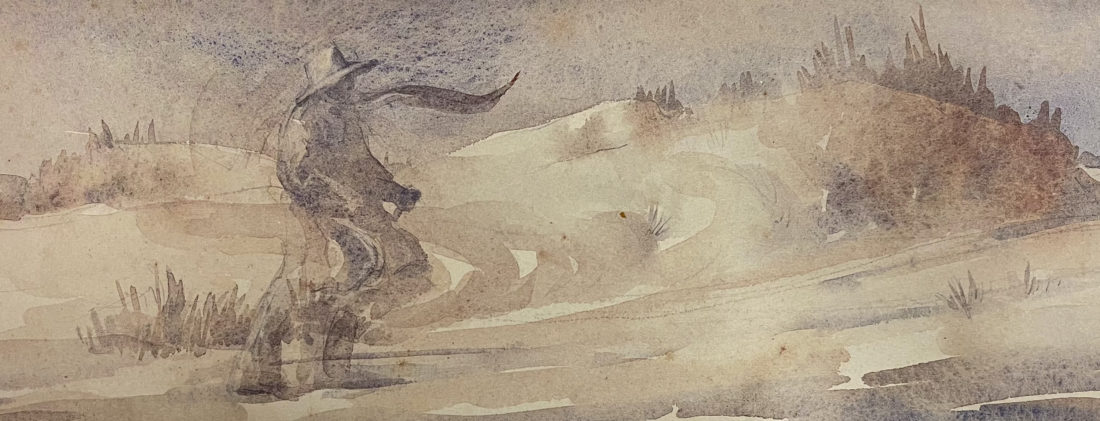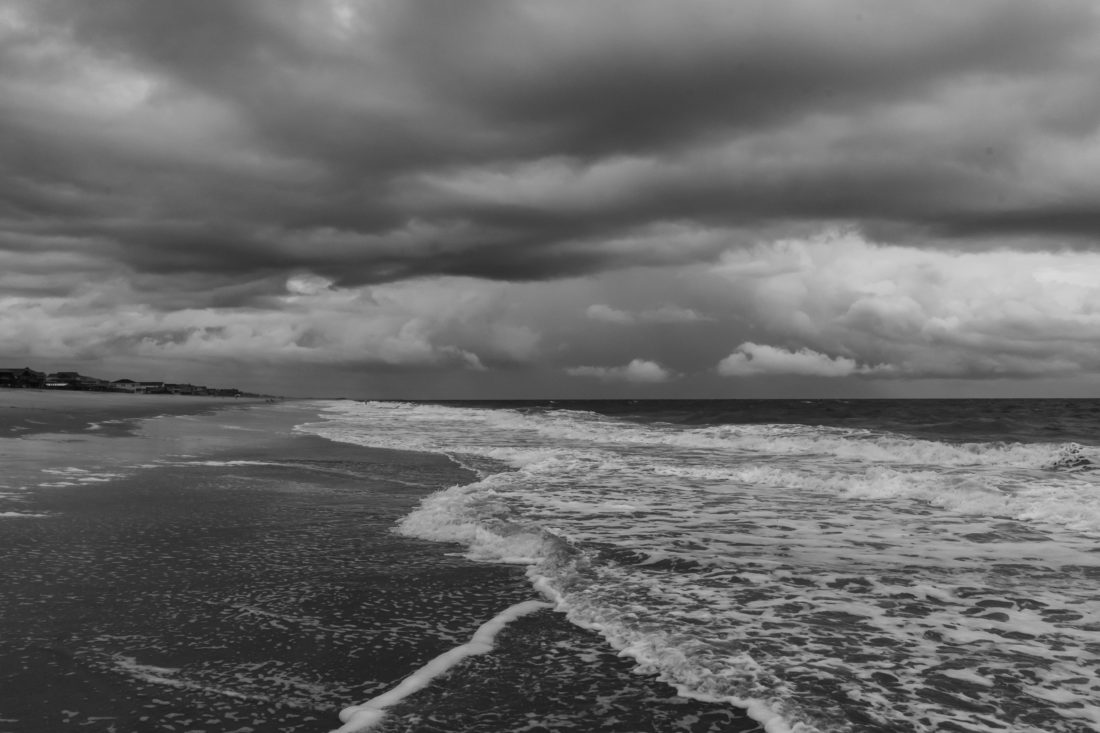It’s my earliest childhood memory: I’m squeezed into the back of my mom’s wood-paneled Buick station wagon, staring out the window at car after car packed with Charlestonians fleeing the wrath of Hurricane Hugo. And though the eye of the category 4 storm passed over Mount Pleasant, South Carolina, on September 28, 1989, causing more than $270 million dollars in damage, coastal communities north of the eye were, in some cases, hit as hard or even harder.
The tiny fishing village of McClellanville, located fifty minutes north of Charleston, for instance, recorded the region’s highest storm surge—sixteen feet at its height. On nearby Pawleys Island, Hugo’s monster surge cut the island in two, carving out a new inlet. In the aftermath, the four-mile barrier island looked like a war zone, and the local newspaper reported more than a hundred homes were lost to the storm. Not all were destroyed, however, and among those spared was the historic beach house of the Love family, fourth-generation Pawleys Island homeowners.
Was it just dumb luck or something else that kept the Love home intact?
“My parents had gone down to Pawleys to board things up [before Hugo],” remembers Arney Love, whose great-grandmother once ran a popular inn on the island. “My best friend’s husband stopped by on the way to Myrtle Beach for work. There was no car when he pulled up, but he saw my dad up on the lookout. Turns out Dad wasn’t home; who he thought was my dad, we now believe was the Gray Man. In the end, our house was spared.”

Frequent Pawleys Island visitor Melanie Moore Tanner described a similar chain of events to TV producers at The Weather Channel: her parents’ sighting of a shadowy male figure dressed in gray just before Hugo, and the ultimate survival of their beloved family home on which the insurance had lapsed mere weeks before.
So, who (or what) is the Gray Man? Well, that depends on whom you ask. The legend of a ghostly man dressed in a long gray overcoat and hat, who walks the beaches and marshes surrounding Pawleys Island just before hurricanes and other major storms, has persisted since the first reported sighting in 1822. For residents and homeowners, a glimpse of the Gray Man is both an ominous harbinger—sightings have been recorded before every major hurricane dating back two centuries—and an uneasy comfort because if you believe the Gray Man mythology, then an encounter with the prophetic spirit is a promise of protection, indicating your house will be spared. (Editors’ note: G&G would advise relying on your local meteorologist or the National Weather Service rather than on a ghost, however benevolent, when making your evacuation plans.)
The Gray Man’s earthly identity is more of a mystery and the subject of much regional debate. Love, for example, was always told that the Gray Man was the ghost of a Confederate soldier, who had ridden hard and returned home from war just in time to warn his family of an impending storm. The family is said to have survived only to receive a telegram days later informing them of his death on the battlefield weeks earlier. Though this is an often-repeated Gray Man origin story, it doesn’t track with the timing of the first reported encounter in 1822.

A second version of the tale identifies the Gray Man as the ghost of prominent Pawleys Island summer resident Plowden Weston, a rice planter and the original owner of the home that is now the Pelican Inn. “Weston would have been a small child at the time of the earliest sighting, so this story probably isn’t accurate either,” admits Bruce Taylor, the co-owner of the historic inn.
The most popular backstory tells the tale of a nameless man anxious to return to his beloved fiancée on Pawleys Island after a long trip abroad. Spurred on by an approaching storm, he hastily tried to cross the marsh on horseback only to get stuck in a morass of pluff mud and salt water, eventually drowning or being pulled under, depending on the storyteller. Later, he is said to have reappeared to his devastated fiancée on the beach, warning her of another approaching storm. Her family left and, upon their return to the island, discovered their house among the few still standing.
Regardless of the Gray Man’s origins, sightings continue to roll in each year with the arrival of the summer storm season, peaking when a hurricane looks like it might make landfall nearby. In the end, only you can decide what to believe. But when I began researching this story, I reached out to friends and family in the area. To my surprise my dad—very much the logic-driven, literal type—was the first to respond to my text with his own Gray Man sighting, a story I’d never heard. A rising high school senior in the summer of 1975, he was driving to a cousin’s house on Pawleys in the middle of a huge evening storm when a shadowy figure in a hat and coat appeared in his headlights, only to disappear into the marsh. The road flooded over minutes later. For me, that is proof enough, and this hurricane season, I’ll be keeping my eyes peeled.








